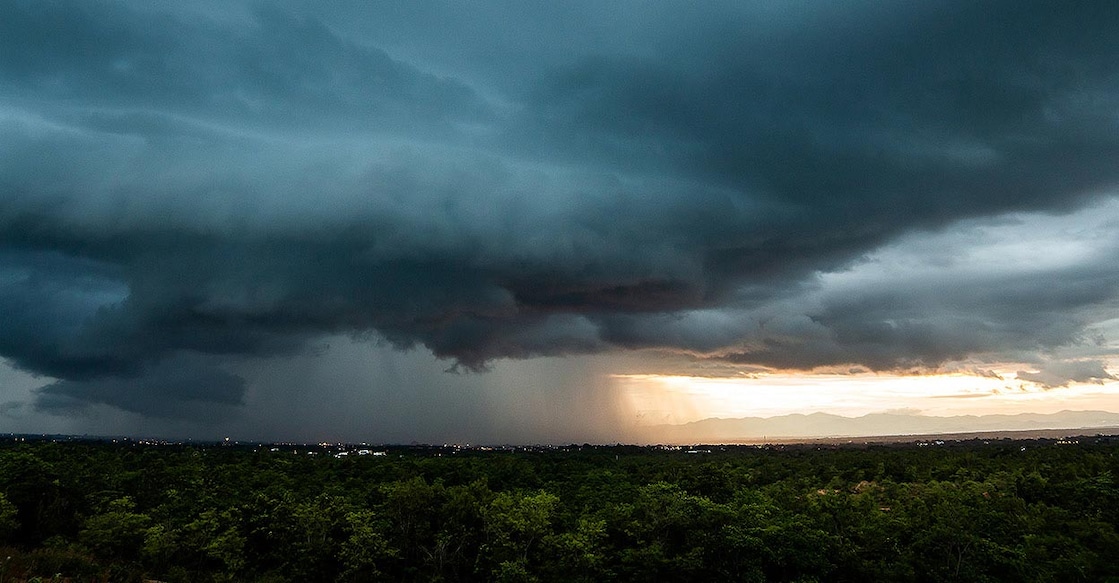Kerala gets 85% excess summer rain, decade's second highest. Still, water level in dams safe

Mail This Article
Frequent formation of low pressure areas over the Bay of Bengal during summer has precipitated record summer showers in Kerala this year. In this half-way period of the three-month (March 1 - May 31) pre-monsoon season, Kerala has recorded the highest ever rainfall in the last 10 years for which figures are available.
During this summer, from March 1 to May 31, Indian Meteorological Department (IMD) figures show, Kerala has recorded 85 per cent excess rainfall. All districts, except Kollam, Alappuzha, Malappuram and Thiruvananthapuram, witnessed 'large excess', or more than 60 per cent excess rainfall than normal. The four districts received 'excess' rain, which is rainfall over 30% of the normal.
Ernakulam received the highest pre-monsoon showers, 152 per cent above normal. The district that normally receives fairly copious rainfall of 400 millimetres during the season, received a whopping 1007.6 mm this time. Kottayam, too, saw a spurt in rainfall this summer; from a normal of 433 mm to 971.6 mm, a 124 per cent increase. The districts that received an excess of over 90 per cent rainfall than normal are Kozhikode (350 mm to 679 mm, 94 per cent increase), Thrissur (371 mm to 717.8 mm, a 93 per cent swell) and Pathanamthitta (495 mm to 944.5 mm, 91 per cent excess).
In fact, till about the middle of summer (April 15), the excess rain was an unprecedented 129 per cent, triggering fears of a flood with the southwest monsoon waiting around the corner. However, the rains tempered towards the latter half of April. At that point, Kasaragod had received the highest pre-monsoon showers, a mind-boggling excess of 569 per cent above normal. Usually the northernmost district is the driest patch of land in Kerala during the first half of the pre-monsoon period, receiving only around 25.8 mm of rainfall during the period. But this summer, the district had received 172.7 mm of rainfall by the middle of April. However, with rains virtually drying up by May, the excess rainfall in Kasaragod by the end of summer is only 73 per cent (from a normal of 273 mm to 473 mm). At the summer midpoint, Ernakulam and Pathanamthitta had also witnessed rainfall that was more than 200 per cent of the normal; 253 and 207 per cent respectively.

By the middle of summer, it had also seemed that the incessant rains could wreak havoc even before the onset of the monsoon. Nine of the 14 districts, including Alappuzha and Kottayam where the summer showers hurt the farmers the most this year, received rainfall that was more than 100 per cent excess. The rainfall was so heavy that it destroyed crops in over 12,500 hectares.
Fortunately, like in 2017 when there was an excess 189 per cent rainfall in March, there was a massive reduction in rainfall and eventually by the end of the three-month pre-monsoon period, the excess rainfall shrunk to 85 per cent. Still, IMD officials say, the summer showers are "massive". In 2017, after the initial surge, the rainfall fell below the normal by 7 per cent by the end of summer.
The heavy summer showers are not unusual either. Last year, 2021, the pre-monsoon showers were excess by 107%. In the last decade, there were four 'excess' years: 2021 (107%), 2020 (7%), 2018 (37%), and 2015 (23%).
Excess rainfall does not foretell anything devastating either. It is not a sign of a drought or a flood to follow. In 2019, when there was heavy floods, there was a 53 per cent deficiency in summer rains. During the year of the deluge in 2018, there was excess pre-monsoon rain but only 37 per cent.
However, excess rainfall can put dam management in crisis mode. This time, thanks to sound and timely pre-monsoon water level management, Kerala's dams have enough space to absorb even a heavy monsoon; it is only 33 per cent full. Even the largest dam, Idukki dam, is less than 40 per cent full. The storage is lesser than even last year. Result: immediate threat of floods ruled out.

